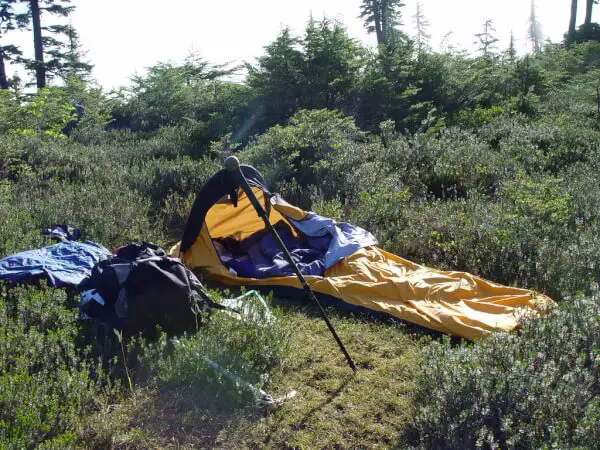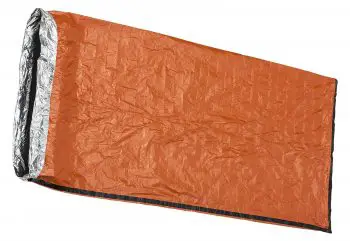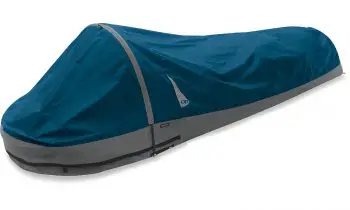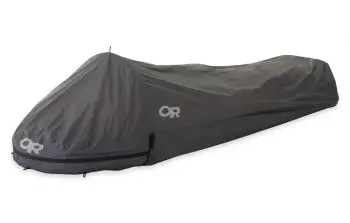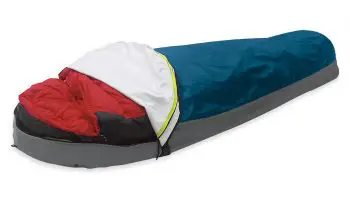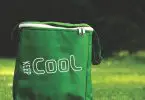Finding the best bivy sack might be an easier task than you think. When it comes to bivies, we want them to meet a few basic requirements, and if any goes the extra mile, you can be certain it is the best one. At least until a better one appears.
What is a bivy sack?
If you’re new to camping and hiking, or never went on such an adventure, you can’t really know what a bivy sack is. A bivy or bivi sack is considered by many to be a single person tent, while others might describe it simply as an item that protects you when you sleep outside.
It mostly protects from the rain and dropping temperatures. Some are designed to protect against mosquito bites thanks to a net piece of fabric placed at the head area.
Some people might be claustrophobic, and sleeping in this hiking gear might be unbearable to them. They have the option to either not purchase one at all and choose a tent instead, or sleep with it opened, using just the bug net. Many users of this item compare it to a soft coffin, a thought not so pleasant to have.
When you first see a bivy and its shape, you might also have the impression it looks like a coffin. Both have a wider area at the shoulder and chest part, and they both narrow quite a lot towards the feet. The shape is the only feature the two have in common though.
Most bivis have an arched guy pole about where your shoulders would be when you’re in the sack. The role of the guy pole is to keep the fabric lifted off your face, thus making more internal space. By using the guy, you’ll feel more comfortable when sleeping, and be able to read a book too if you can’t fall asleep.
These items are meant to be used by a single adult. Two really thin people might be able to fit into one, however it won’t be a pleasant experience.
Where do I buy one?
Buying one should be easy, as there are many specialized stores selling them. The prices are a little high at times, but those are really functional, durable, and can be used year-round, even for several years. Walking into a store and feeling the sack for yourself can give you a better idea of whether you’ll be comfortable using it or not. You’ll also be able to better tell if you’re going to fit in it or not.
Many online retailers started selling such sacks as well, however you can’t always be sure of what will you get. It is possible to stumble upon fakes while shopping online, so paying attention to the seller is important in these cases. The advantage of online stores is that you can find one that suits your needs faster, along with any other gear you might require.
What should I pay attention to when buying one?
One of the first things to know before making your purchase, is that these items do not come in sizes. However, one manufacturer’s bivy could be a tiny bit smaller or bigger than a bivy from a different maker. Manufacturers create several models of bivi sacks, but each model has a standard size. They’re generally more than 7 feet long, therefore even really tall people will fit into one.
Paying attention to bivy sack reviews will help you in identifying a really good one, if not the best out there. Since there are many people out there who like to go hiking and camping, it’s really easy to find and read reliable reviews of any sack you might be interested in. You’ll probably be surprised to hear that some hikers buy more than one bivy, and even bring with them more than one, should an unexpected situation occur.
You can also learn which are the downsides of specific bivis, and not only their benefits. Some disadvantages can relate to the closing system – whether it needs improvement or not, it is easy to operate or not, and so on. The price of some of them can discourage shoppers from parting with their money.
You should also check out the features of the bivy. For instance, some may not have a bug net attached, and you’d have to get a separate one. Other bivy sacks are thicker and meant to be used in extreme low temperatures – their use in summer can be one of the worst ideas ever.
Others are meant only for summer time, and as such, being made of a bug net on the upper part. You might find some models without a guy pole, leaving the fabric to freely fall on your face.
When properly closed, most bivis allow for condensation to form. To avoid this, some models are made with special vents. These are also useful for people who have trouble breathing at night. To improve ventilation, some manufacturers placed special openings at the feet area. The sacks with a better vent system are usually designed for almost any season, except winter, when you’ll need all the warmth you can get.
Its price is also important. You shouldn’t look for the most expensive bivi, as they are on the pricey side already. Instead, try to search for the cheapest one with the most qualities. The easiest way to do so, is to look at discounted products, or at various promotional sales. The cheapest one is usually a good choice for a beginner hiker.
How do I sleep in a bivy sack?
This is a really good question, coming from someone who never used one before. First of all, you can’t sleep in one directly, like on a bed. You’ll generally need a sleeping bag or a blanket to keep you warm – usually the temperatures can drop a lot at night on the mountain or in the forest.
You’ll also need a special mattress to sleep on as the bottom of the bivy is really thin, and can make things uncomfortable. The mattress is usually called a sleeping pad and it has the shape of the bivy.
The pad makes your sleeping space more comfortable, a bit warmer, and is placed directly on the sack’s floor. Depending on the model you get, the bivy might have some straps meant to keep the sleeping pad in place throughout the night.
How do I know I’m getting the best one?
Unlike many other items, bivis are pretty much standard. They’re usually designed to last a few hiking seasons – about 3 or 4. There are a few things most hikers want from their sacks: to be lightweight, completely waterproof, and well ventilated. Some folks might overlook the ventilation system of the sack, as they prefer sleeping with the zipper a little undone.
Get the latest design possible, especially if reviewers recommend you to. The latest models are generally better, using superior fabrics, and better longevity You should also make sure your preferred one is designed for the conditions you’re going to use it in.
A really good bivy can rise the temperature by some 10 degrees, and this will feel suffocating in summer. It is time we learned which are the bivy sacks you won’t regret spending money on.
The Top Bivy Sacks You Can Get
Survive Outdoors Longer Emergency Bivvy
Weight: 3.8 ounces
Dimensions: –
Size: One size
Features: Weather proof, mummy bag shape, stretchy
Best for: Emergency situations
A life or death situation is not something that you want to encounter while you go hiking. However, accidents can happen even to seasoned hikers, and they need to survive until they’re rescued. This Emergency Bivy is bright orange, therefore it stands out and is easy to notice from a distance.
You can be sure it will protect you from the rain, snow and even cold temperatures. It is made of a special material that insulates you and keeps all warmth on the inside where it is needed the most. One has to be a little careful though because any sharp object can damage it, making it useless.
What’s more is that the fabric stretches a little bit, therefore even larger people can use it. Since it is so lightweight, you should carry one with you at all times – you might be able to help others in need when you least expect it. Packing it back up can be a little tricky, but not impossible.
Outdoor Research Bug Bivy
Weight: 16 oz (454 g)
Dimensions: 18 x 25 x 89 inches
Size: One size
Features: Waterproof floor, no-see-um netting, lightweight
Best for: Summer and really hot seasons
This Outdoor Research Bug Bivy, as you can already tell, is made of netting on top and a bathtub like bottom, made of a waterproof material. This can only mean one thing: you will only be able to use this product when sleeping outside, on really hot nights. If you’re scared it will rain, you’ll need to set it under some sort of other shelter that will protect you from the water.
The net will protect you just from getting bitten by mosquitoes and other bugs – if you either sleep in a sleeping bag or manage to offer extra support to the net. The fabric falls on you, at the leg area and biting bugs can feast on you just fine through it, if there is nothing else to protect you.
Two of its great advantages are that the item i not heavy at all and that you can use the net on top of your bed should you need it.
Outdoor Research Advanced Bivy
Weight: 2 lbs 5.1 oz (1056 g)
Dimensions: 87 x 26 x 20 inches; packed: 15 1/4 x 4 x 4 inches (or 39 x 10 x 10 cm)
Size: One size
Features: waterproof, breathable
Best for: Lightweight backpacking, year-round use
If you’re searching for a bivi sack that can be used at any time, you most likely found it. You may like this Outdoor Research Advanced Bivy because it is waterproof and lightweight, therefore not adding much weight to your luggage. It’s designed with two guy poles to keep the fabric off of your face when you sleep.
You should know that this sack will keep you comfortable, no matter the position you prefer sleeping in – on your side, belly, or your back. Condensation will form if you close it completely, something you might have to do in a downpour. If the weather allows it, or it’s really warm, feel free to sleep with it completely unzipped as it has an insect mesh fabric that will keep mosquitoes and other crawlers away from your face.
You might have some issues operating the zippers as their handle is rather small and difficult to grab, especially if you’re half asleep and need to wake up in the night. This can be fixed if you wrap some tape around the handle, to make it somewhat easier to grab.
Outdoor Research Helium Bivy
Weight: 18 oz
Dimensions: 19.5 x 26 x 84 inches
Size: One size
Features: Lightweight, breathable, waterproof
Best for: Ultralight hiking
If you don’t want to carry a lot of weight when you go hiking, you can cut down some by purchasing this super lightweight Outdoor Research Helium Bivy. This is due to the fabric it is made of: really thin, feeling almost flimsy. depending on when and where you go hiking, the weather might change and it might rain.
You don’t need to worry if you don’t have a tent with you, because the Helium Bivy is waterproof. You will want to zip it all the way, as not to have water coming in, and that’s when you’ll notice condensation forming especially at the foot region. Condensation will form in any tight closed bivi sack anyways.
The sack comes with a net against the bugs, allowing you to look at the sky before falling asleep if the weather allows it. The sack has a guy line at the neck region to keep the fabric off your face, reducing the claustrophobia sensation.
Sleeping Bag, MSS Gortex Bivy Sack
Weight: 2 lb 3 oz
Dimensions: 35 x 79.5
Size: –
Features: Waterproof, durable
Best for: Beginner campers
The first thing you should know is what MSS Gortex Bivy Sack stand for: Military Sleeping System. This means there were several components that could be used by the military personnel when they needed to sleep, no matter the temperature. The bivi sack in the system is very basic, as it has no net against the bugs.
It also lacks pockets or hoops – features that other sacks do have. You can fit two sleeping bags inside this sack, and if they’re made by the same manufacturer, you can be sure they’ll stay in place thank to the snaps, making things more comfortable when you sleep.
This type of bivy sack is a bit older, however its simplicity still attracts many campers. What makes it really good is that it is completely waterproof and is made of a very durable material. Currently the army is not using this type of bivi anymore, and now they’re easily available and can go for pretty cheap.
Given its durability, simplicity and low price, it makes a good starting camping gear for someone who doesn’t know if they will like this activity.
Outdoor Research Alpine Bivy
Weight: 30.3 oz (or 859 g)
Dimensions: 15 1/4 x 4 x 4 inches or 39 x 10 x 10 cm (packed); Length: 84 in (221 cm), Max width: 26 in (66 cm), Peak height: 20 in (50 cm)
Size: One size
Features: Waterproof floor, breathable,
Best for: Storm
This item is perfect to use instead of a single person tent, if you’re not claustrophobic. However, even if you were, this Alpine Bivy is large enough as not to trigger your phobia. In fact, depending on how big you are, you could have a second person sleeping with you in it, without much problems.
Though this should only be done in case of an emergency – such as when the tent got somehow broken or missing. This bivy has an insect net, and not even no-see-ums will disturb you – therefore you can sleep with it unzipped if the weather is warm enough.
If you worry that your sleeping pad won’t stay put, you can forget all about this issue. The sack has specially designed straps to help keep the pad in place. You’ll most likely like the pole on this bivi as it will help with ventilation while increasing the inner space, giving less of a claustrophobic sensation.
Make sure to also check out the mesh pocket found on the inside: it will help with storing small things you don’t want to misplace.
Some Ending Words
So by now not only do you know what a bivy sack is, you also know how to identify the better ones from the many options available. You also learned that some of them can be used only in certain situations, while others can be used in most situations. One of the most important lessons is that you can easily get tricked in spending more when it’s not necessary since a cheap product does the same as an expensive one, and that all bivis are pricey.
Featured Image Source: “Bivy!” by kteague is licensed under CC BY 2.0


